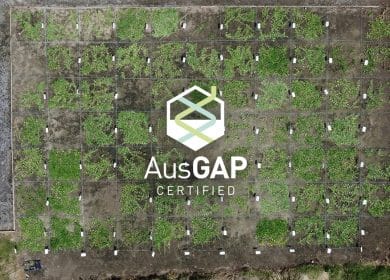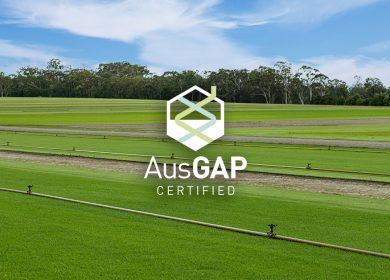Automowers are affecting mowing practices for turfgrass management

Mowing is a key component of turfgrass management. As technology changes in the turfgrass industry so do its practices. Automowers are increasing in use with the home lawn, sports turf facilities and public land exploring its advantages. While seeing a reduction in human labour, potential injuries, and reducing pollutants, there may also be aesthetic benefits of autonomous mowers for the turfgrass surface. Read on to explore the effects of autonomous mowers on turfgrass and its management.
Mowing removes the excess leaf material while generally following the one-third rule. This rule is used to avoid scalping and decrease physiological stress from removing too much of the leaf blade. Furthermore, autonomous mowers perform mowing without an operator. As such, they can be programmed to operate everyday reducing how much leaf is cut from the grass.
What are the positives of automowers use?
The use of autonomous mowers will reduce human labour and more time can be spent on other turfgrass management tasks. Additionally, as the mowers are battery powered they do not produce gasses and making them more environmentally sustainable than conventional petrol mowers. Furthermore, providing optimal turf maintenance everyday also provides a more tightknit turfgrass covering (Grossi et al., 2016). Ultimately, the return of clippings provided by the daily autonomous mowing was found to reduce N fertiliser requirements by 30 to 75% (Hesselsøe et al., 2022).
In trials conducted with tall fescue and bermudagrass, plots mowed with auto mowers saw an increase in turf quality and lower weed incidence. These results were evident after 12 weeks of daily autonomous mowing (Grossi et al., 2016). Additionally, a lower disease incidence was observed on fairways and semi roughs that employed robotic mowers. This was believed to be due to daily dew removal (Hesselsøe et al., 2022).
What are the challenges of automowers use?
Robotic mowers have come a long way during their short time on the market. However, it is important to note the cost of initial set up as well as what can sometimes be a time-consuming set-up (Sportelli et al., 2019). To illustrate, a study examined automowers in domestic settings and most participants with irregular shaped lawns had issues with non-homogenous cuts and often needed manual intervention in assisting the automowers with trees and cutting turf long the edge of the boundary. On the other hand, the interviews with the participants showed that most of the problems encountered were planning errors which could have been easily avoided during planning (Sportelli et al., 2019).
As an essential practice of turfgrass management, mowing can be one of the most time-consuming factors. Autonomous mowers have many perceived advantages with increasing uses and applications as technology changes. Increased operating times, and area coverage provide higher overall efficacy making them a viable option for many applications whether it be golf courses or the home lawn.
References:
Hesselsøe, K. J., Borchert, A. F., & Aamlid, T. S. (2022). Robo‐Golf: Robotic Mowers for better turf quality on golf courses—preliminary results. International Turfgrass Society Research Journal, 14(1), 1049–1056. https://doi.org/10.1002/its2.143
Grossi, N., Fontanelli, M., Garramone, E., Peruzzi, A., Raffaelli, M., Pirchio, M., Martelloni, L., Frasconi, C., Caturegli, L., Gaetani, M., Magni, S., McElroy, J. S., & Volterrani, M. (2016). Autonomous Mower Saves Energy and improves quality of tall fescue lawn. HortTechnology, 26(6), 825–830. https://doi.org/10.21273/horttech03483-16
Sportelli, M., Martelloni, L., Orlandi, A., Pirchio, M., Fontanelli, M., Frasconi, C., Raffaelli, M., Peruzzi, A., Consorti, S. B., & Vernieri, P. (2019). Autonomous Mower Management Systems Efficiency Improvement: Analysis of Greenspace features and planning suggestions. Agriculture, 9(6), 115. https://doi.org/10.3390/agriculture9060115


